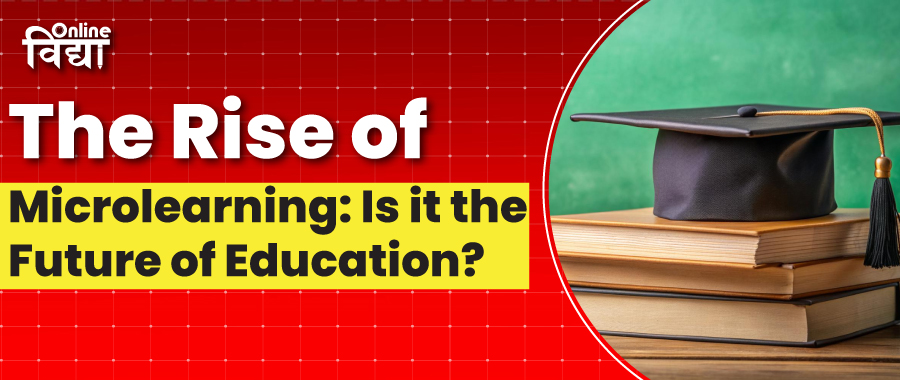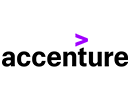Specializations
Courses Available
Courses

The Rise of Microlearning: Is it the Future of Education?
The Rise of Microlearning: Is it the Future of Education?,May 09, 2025
Information
May 09, 2025
1060 Views
- Share:
Microlearning transforms learning through its bite-sized, flexible modules, which enhance retention and are ideal for instant staff training in modern workplaces.
Microlearning: Revolutionizing Modern Education
Traditional teaching is undergoing a significant transformation in present-day, fast-moving society, with time being an essential commodity. In a world where technology is growing, Microlearning is taking place and gaining acceptance in the landscape of training and learning. It is a leading-edge approach in modern education that offers a more flexible and effective alternative to traditional training methods.
Microlearning: Concept
As a student-focused strategy, microlearning deconstructs advanced knowledge into short, focused lessons. These short presentations, often lasting several minutes, employ multimedia components, including infographics, films, and quizzes, to effectively capture students' attention. This strategy is ideal for today's learners' preference for easily accessible, interactive content.
The benefits of microlearning in today's education are:
1. Convenience and Flexibility
Microlearning is a beam of flexibility in the era of hectic schedules. In this busy rhythm of modern life, students can readily access microlearning content during short breaks or their daily commute. Its portable nature is compatible with daily routines and converts downtime into valuable learning experiences. This blending not only encourages occasional learning but also a culture of continuous learning where knowledge is embedded in daily routines.
2. Improved Retention
Microlearning's capacity to enhance retention is not confined to its bite-sized nature. Important concepts are deliberately reinforced by embracing the psychological technique of spaced repetition. Microlearning prevents the mental overload that routinely hinders conventional learning by offering material in short, intense bursts. This systematic method ensures that learners not only grasp the content initially but also remember and recall it more effectively over time, leading to enduring knowledge acquisition.
3. Economicalness
Microlearning's move toward digital distribution heralds a revolution in cost-effectiveness. Traditional training methods can require significant investment in buildings, instructors, and materials. With its digital nature, microlearning profoundly minimizes these costs. The result is a training system that is powerful and cost-effective. Microlearning is a smart business decision because it enables organizations to spend on premium-quality training without worrying about prohibitive expenses.
4. Flexibility
The flexibility of Microlearning is beyond the types of forms in which it. It adjusts learning scenes and listening with video, a quiz, and an infographic. This flexibility ensures an individual and inclusive learning experience that appeals to a wider population of students. Whatever they want, students can make a strong relationship with it by being able to access knowledge. A culture that rewards personality is a supporter of flexibility and manages instruction to meet the unique needs of each student.
Employers Leveraging Microlearning to Train Employees
1. Onboarding Programs
Aside from efficiency, microlearning contributes to onboarding by stimulating feelings of belonging and commitment. New employees are introduced to their jobs with the implementation of bite-sized modules that provide information on business culture, policies, and job-specific skills.
2. Skills Enhancement
Microlearning equips employees with the competencies they require to remain competitive in the dynamic world of work. A flexible workforce is developed by readily available modules that enable individuals to learn new skills or enhance existing ones on an ongoing basis.
3. Compliance Instruction
The issue of compliance training in regulated organizations is tackled through microlearning. Employee understanding and compliance are enhanced when intricate regulatory information is broken down into bite-sized modules.
Blending Microlearning With Other Training Methods
1. Adding Instructor-Led Instruction
Microlearning and instructor-led training complement each other to develop a powerful duo. Microlearning is utilized as post-training reinforcement, so learning is reinforced and sustained, or as pre-training content to prepare students for instructor-led sessions.
2. Microlearning and Gamification
When gamification elements are used in microlearning, the learning experience is made interesting and enjoyable. Incentives, challenges, and progress tracking enhance engagement and motivate students to engage actively in their studies.
3. Integration of Mobile Learning
The mobile learning trend is seamlessly blended with microlearning. Leverage the commonality of smartphones and tablets, its mobile optimization ensures that students have access to content at any time and from anywhere, delivering a truly flexible learning experience.
In summary, microlearning is a dynamic and adaptable pedagogical approach. Aside from being effective, microlearning embodies the essence of today's education: it is dynamic, accessible at will, and tailored to fit the individual's needs. Microlearning comes through as an essential element that is revolutionizing learning and development as companies continue to navigate the landscape of education.
FAQs
How long has microlearning existed?
The term "microlearning" was initially published in 1963 in Hector Correa's book The Economics of Human Resource. As the internet became much more easily accessible to household residential living in the mid-1990s, microlearning came to the forefront.
Which are the microlearning trends that we observe?
To enable a better and personalized training experience, microlearning will evermore leverage the usage of adaptive learning technology, which will adjust the content distribution according to the learner's progress, behavior, and performance.
Why is microlearning so popular?
Based on facts, students retain more and are 50% more engaged when microlearning is used. Due to the low likelihood of cognitive overload, the learning experience of the learner and the amount of knowledge recalled are both enhanced through the precise learning nuggets and the extensive variety of formats.
What is microlearning theory?
The Hermann Ebbinghaus forgetting curve, which states that individuals' capacity to remember information tends to get worse as time passes when they learn a significant amount of it, forms the basis of the microlearning premise. In reality, individuals typically forget 80% of information learned in one month.
What benefits can microlearning provide?
There is as much as 80% more attention and memory retained by students who undergo microlearning. Compared to traditional training methods, microlearning increases course completion and participation by four times. Microlearning accelerates delivery by 300% and reduces course development costs by 50%.

Meet Our Counselling Experts
Get 100% Free Career Counseling




PlacementPartners










Schedule Your 30 min Couselling Session With Today!!
Select a Date of your choice :
You Have Selected Slot on .

